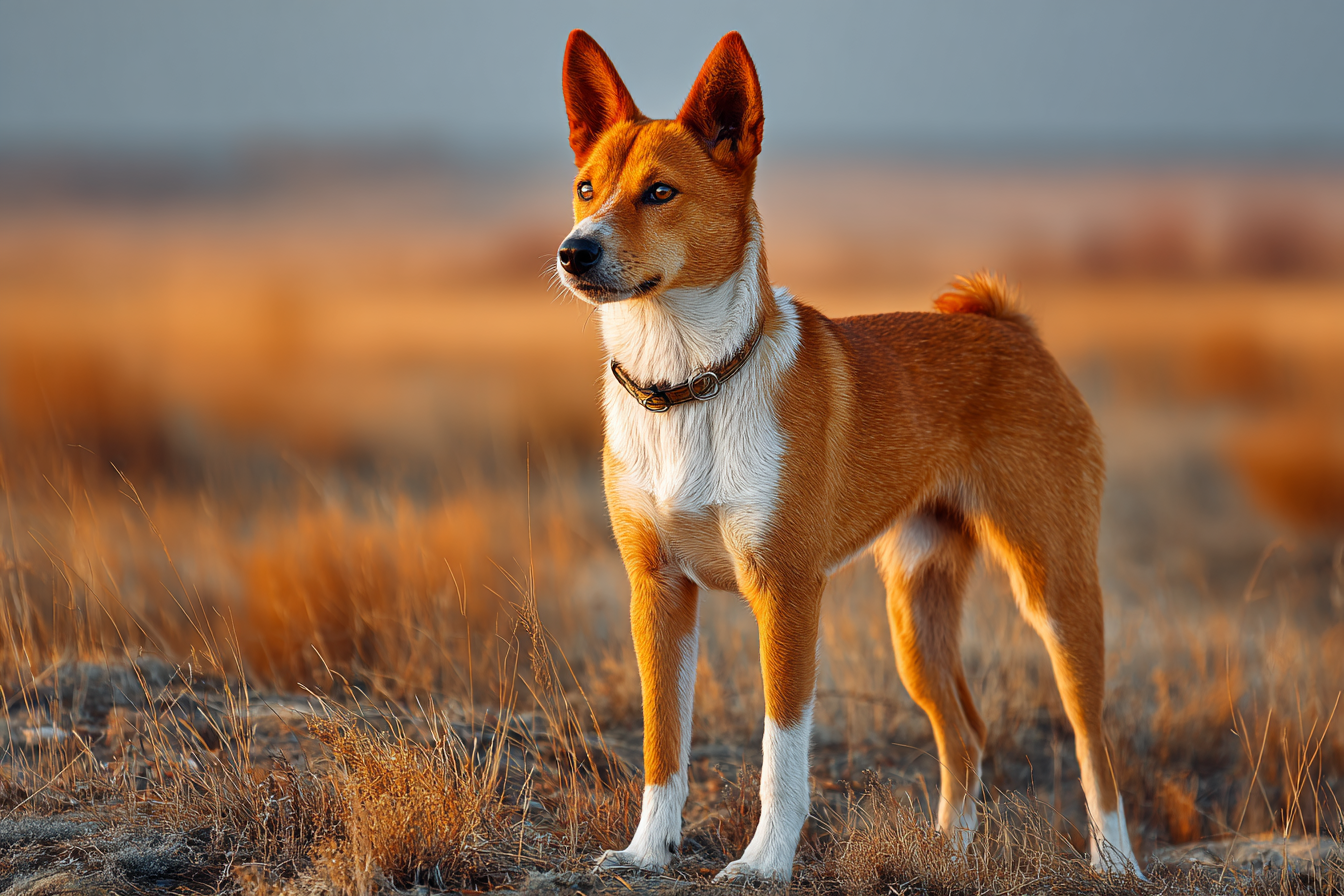The Basenji dog is truly a fascinating breed with a history as unique as its appearance and behavior. Known for its sleek, elegant body and remarkable intelligence, this breed has a story that stretches back thousands of years. Unlike many other dogs, the Basenji is often referred to as the “barkless dog,” but there is so much more to uncover about its background. Let’s take a journey through time to explore the origins of the Basenji, understand its role in various cultures, and see how it made the leap from the heart of Africa to homes all around the world.
Origins of the Basenji in Central Africa
The Basenji’s roots trace back to Central Africa, specifically the Congo region. Archaeological evidence and genetic studies suggest that Basenjis are one of the oldest dog breeds in existence, with origins dating back to ancient times. In fact, the breed’s lineage appears to predate many of the modern breeds we recognize today.
The Basenji was first discovered by Western explorers and scientists studying native African tribes, where the dogs were valued hunting companions. The breed’s name, “Basenji,” comes from the Lingala language of the Congo and translates to “dog of the bush.” This reflects the dog’s natural environment and its traditional use in hunting within the dense jungle terrain.
Historical Roles and Uses
For centuries, the Basenji served multiple important roles in the lives of Central African tribes. Primarily, these dogs were invaluable hunting allies. Their keen eyesight, strong sense of smell, and remarkable speed made them ideal for tracking and flushing out small game such as birds and rodents.
But the Basenji’s usefulness extended beyond just hunting. Tribal communities also relied on Basenjis for their alertness and ability to warn of approaching dangers. Their unique vocalization — not a typical bark but rather a yodel-like sound, sometimes called a “barroo” — helped communicate alerts without attracting too much attention.
Due to their intelligence and cooperative nature, Basenjis were sometimes used in herding and protection tasks as well, making them versatile dogs capable of adapting to the needs of their owners.
Introduction to Western Dog Enthusiasts
The Basenji’s journey to the Western world began in the late 19th and early 20th centuries when European explorers and hunters brought specimens back from Africa. Their exotic appearance and distinctive behavior attracted immediate interest among dog enthusiasts and breeders in Europe and North America.
The breed was first introduced into the United Kingdom in the 1930s, and organizations began working to establish breed standards to preserve its unique characteristics. The Basenji was officially recognized by the American Kennel Club (AKC) in 1943, which helped to popularize the breed in the United States.
Despite its growing popularity abroad, the Basenji maintained many of its original traits. Breeders and dog clubs placed emphasis on preserving its natural hunting instincts, wry humor, and health — making sure it didn’t lose its authentic character as it adapted to kennel life.
Basenji’s Cultural Significance
The cultural importance of the Basenji in Central Africa is rich and multifaceted. For many native tribes, the Basenji was more than just a working dog; it was an integral part of daily life and folklore. Some African tribes regarded the Basenji as a spiritual guardian, believing it held protective powers due to its silent nature and alertness.
In artwork and oral traditions, the Basenji often appeared as a symbol of loyalty, agility, and keen awareness. Folktales from the region frequently include the Basenji as a clever and resourceful companion, emphasizing its intelligence and unique voice that sets it apart from other domestic dogs.
This deep cultural connection helped sustain the breed over generations, even as modernization and urbanization began to change traditional lifestyles.
Evolution of the Breed Standards
The breed standards of the Basenji have evolved over time, carefully refined by international dog organizations to maintain the specific qualities that define this remarkable dog. Early Western breeders worked closely with African hunters and villagers to ensure the breed remained as close as possible to its wild roots.
Key features maintained in the breed standard include:
- A fine, wrinkled forehead that adds to its expressive look
- A tightly curled tail resting over the back
- Short, fine coat in colors such as chestnut red, black, tricolor, or brindle
- Pricked ears and an alert, intelligent expression
- Compact and muscular body adapted for speed and endurance
Moreover, the unique vocalization of the Basenji, often described as a “barroo” or yodel rather than a bark, has been embraced as a vital part of the breed’s identity. Standards discourage breeding for excessive barking, preserving its distinctive voice.
Modern-Day Basenji Worldwide
Today, the Basenji enjoys popularity as both a companion dog and a show dog across the globe. From North America to Europe to Asia, dog lovers are drawn to this breed’s elegance, intelligence, and distinctive personality.
Basenjis are known for their curious nature, independent streak, and strong loyalty to their families. While they still possess their ancient hunting instincts, they’ve become well-suited to life as indoor pets who appreciate playtime, mental challenges, and human companionship.
With improved veterinary care and continued commitment to maintaining breed standards, Basenjis tend to have an excellent lifespan and few major health issues. This has made them even more appealing to dog lovers seeking a unique, low-maintenance but highly engaging dog.
Organizations worldwide support ongoing conservation of the breed’s original qualities through specialized breeding programs, educational efforts, and community events.
From their humble origins as hunting dogs roaming the African bush, Basenjis have traveled far — both geographically and culturally. Their fascinating history adds a special layer of depth to their already enchanting personality. For anyone considering welcoming a Basenji into their home, understanding the breed’s origin and heritage is a wonderful way to appreciate the charming and ancient legacy they carry into the modern world.







